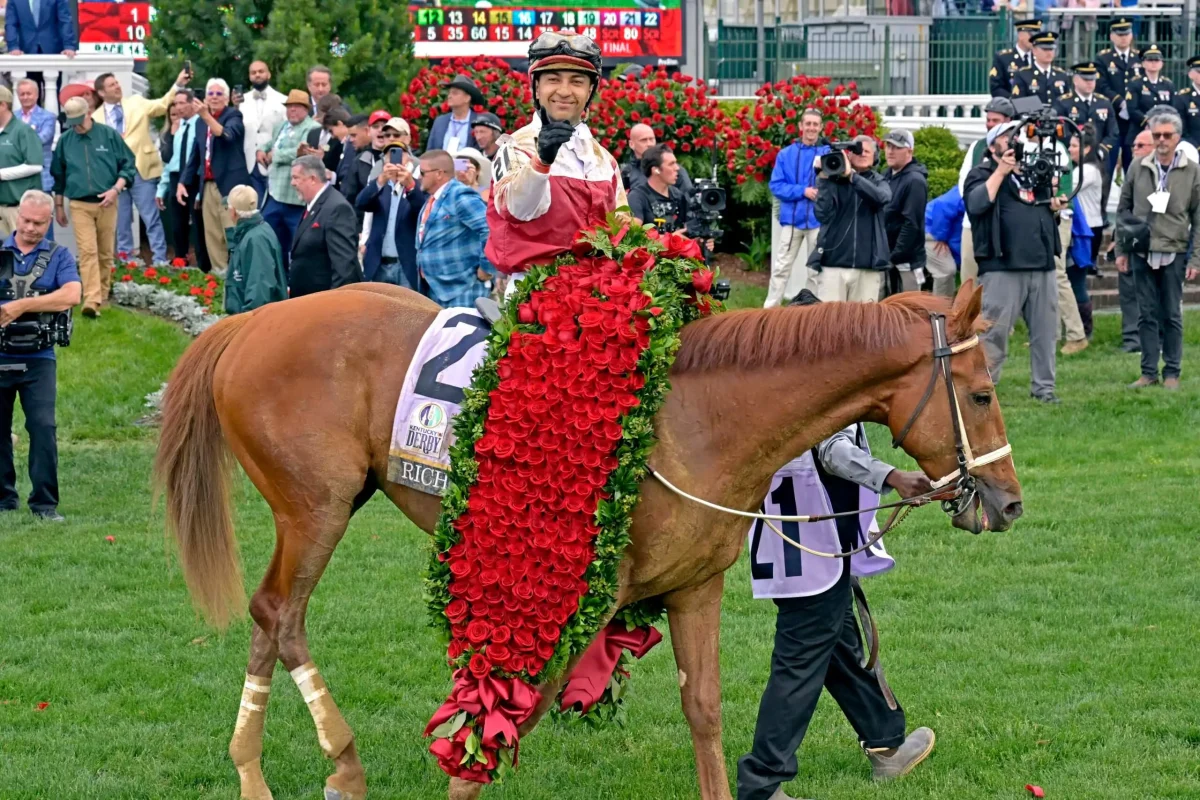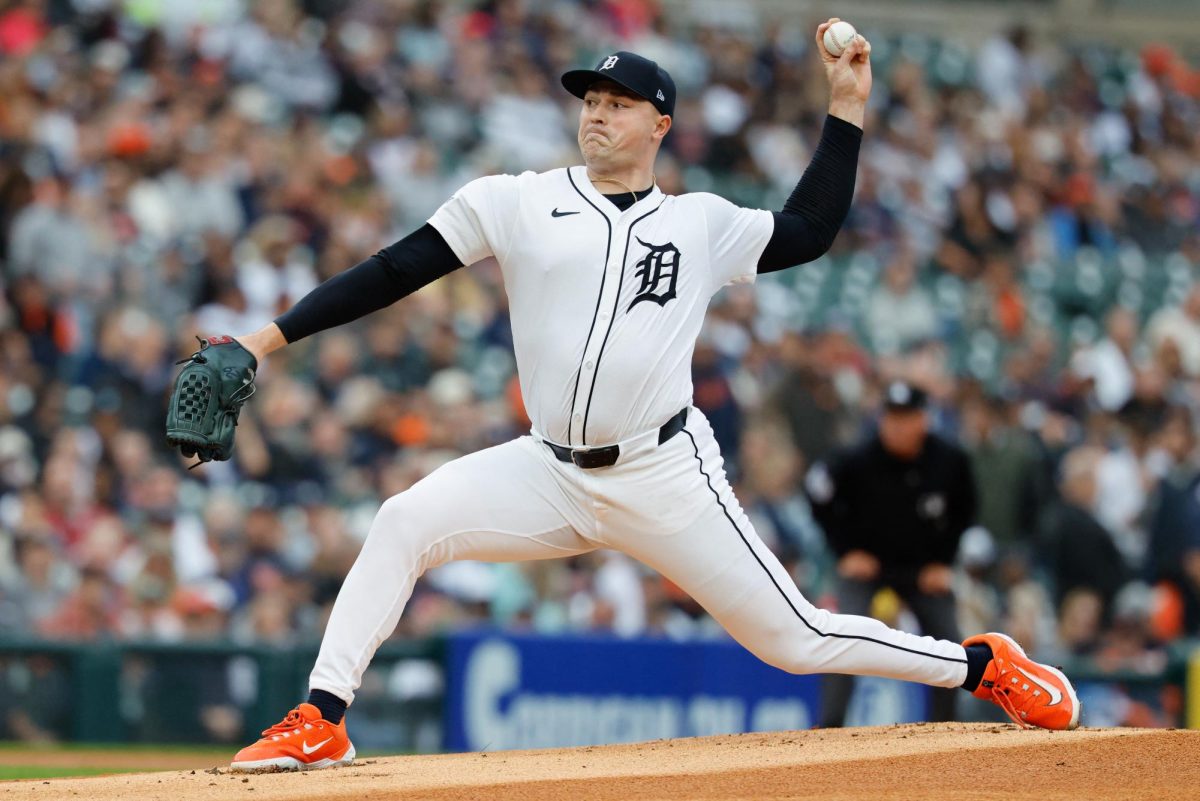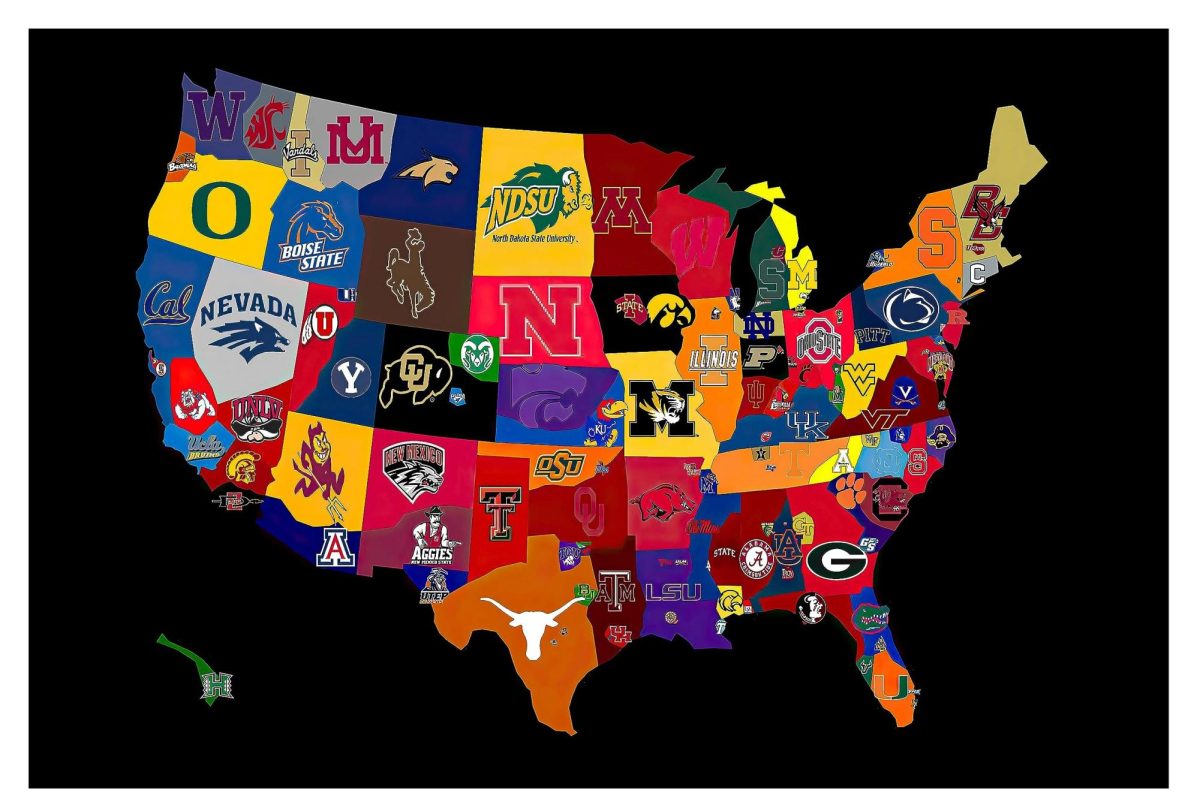Every year, on the first Saturday of May, tens of millions of Americans tune in to watch one of the nation’s most prestigious events, The Kentucky Derby. This iconic horse race is described as “the most exciting two minutes in sports,” and while many people briefly know that the Kentucky Derby is a famous horse race, a lot of people don’t actually know how the race works and the history behind it.
The Kentucky Derby has been running since 1875, making it the longest-running sporting event in the United States. In 1874, Mariwether Lewis Clark, a prominent Louisville citizen, developed the Louisville Jockey Club and started construction on the racecourse, which he patterned after the English Classic, the Epsom Derby. This racecourse would go on to be named Churchill Downs, where the race is still held to this day. Churchill Downs is located in Louisville, Kentucky, and has an astonishing capacity of 175,000, which is significantly larger than any other major sports stadium in the United States. In 1986, Churchill Downs was recognized as a National Historic landmark and remains an iconic staple of American sports to this day.
What many people may not know about the Kentucky Derby is that there are very strict restrictions on what horses are eligible to race. Prior to the Kentucky Derby, dozens of stakes races (qualifying races) are held for 2-3 year old thoroughbreds, which are a breed of horses specifically known for their speed and agility. The qualifying system has changed many times throughout the years, but as of now, there are 20 spots available at the starting gate of the Kentucky Derby. One spot goes to the winner of the Japan Road horse race in Japan, and one goes to the winner of the European race. Whether both of those winners accept or decline that invitation, 18-20 spots are available to the top finishers on the main road to the Kentucky Derby, which are the stakes races. Now it finally comes to the big race, the 20 horses and their jockeys line up to start, but it will be these horses’ first and last time racing in the Kentucky Derby because of the rules in place for these horses. The race is designed for only three-year-old thoroughbreds, so this means that horses are only eligible to race once in their entire life.
While the Kentucky Derby is easily the most well-known horse race in the United States, it is actually a part of a series of horse races known as the Triple Crown. These three races include the Kentucky Derby, Belmont Stakes, and Preakness Stakes. All of the races are usually held from May to early June every year. Whoever wins the Triple Crown is given the Triple Crown Trophy, which was first presented in 1950, yet winning this trophy is actually a lot harder than it seems. In nearly 150 years of its history, only 13 horses have ever won the Triple Crown, the most recent being American Pharoah in 2015, and Justify in 2018. The most famous horse who has won the Triple Crown is Secretariat, who was the first to win the Kentucky Derby in 25 years, and now has a statue at Churchill Downs. The reason why so few Triple Crown’s are won is that, for one, these horses have to race three very hard and challenging races in merely a few weeks. This is more work than any of these horses ever have to take on in the rest of their lives. Another reason why winning the Triple Crown is so difficult is that each of the three courses is slightly different, and the horses’ strengths and weaknesses play into how the course is set up. For example, the Kentucky Derby is 1¼ miles, yet the Belmont Stakes is 1½ miles, making a horse with more endurance more likely to win. This makes each race even more exciting to watch, knowing there may not be one definite winner.
Among the many nicknames that the race goes by, one of the most famous names for the Kentucky Derby is “The Race for the Roses”. After the much excitement and spectacles of the race, the winning horse is dressed in a beautiful blanket of exactly 554 roses. While there is no reason behind the exact amount of roses, this tradition is said to have been started in 1896 as a way to make the roses the official flower of the race, and to symbolize the beauty and prominence of the race.
Whether it be the venue, the horses, the longevity, or the other Triple Crown races, if you decide to tune in to watch this year’s annual running of the Kentucky Derby, think about not just the race itself, but all the other rich history that’s made the race “the Greatest Two Minutes in Sports”.









